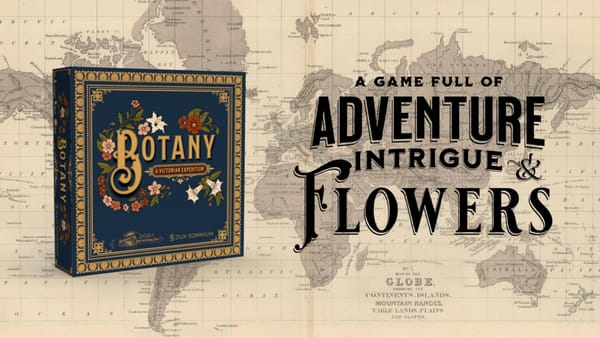How to Build a Strong Community Around Your Tabletop RPG

A strong, engaged community is one of the key pillars to the success of any tabletop RPG (TTRPG) project, whether you're a new game designer or a seasoned creator. When people feel like they’re part of something, they’re more likely to invest time, money, and energy into helping it grow. This is especially true in the world of crowdfunding, where passionate backers are often the driving force behind a successful campaign.
In this post, we’ll explore how to build a supportive community around your tabletop RPG and keep them engaged long after your campaign ends.
1. Understand Your Audience and Their Needs
Before you can build a community, you need to understand who your audience is. Every tabletop RPG has its own niche, and understanding the types of players who will be most interested in your game is essential for building a community that thrives. Here’s how to define your audience:
- Identify Your Game’s Genre: Is your TTRPG a fantasy epic, a science fiction adventure, or a horror survival game? Different genres attract different players, so understanding the specific interests of your potential community members can help you tailor your messaging and outreach.
- Understand Their Values and Interests: What drives your players? Are they looking for a deep, narrative-driven experience, or are they more focused on tactical gameplay and strategy? Understanding your audience’s core values and interests will help you craft content and conversations that resonate with them.
- Engage with Similar Communities: One of the easiest ways to reach your target audience is to engage with existing communities that align with your game. Visit forums, Reddit threads, and Discord servers related to your game’s genre to meet potential backers and players. Join the conversation, learn about their needs, and begin building relationships.
2. Create a Space for Discussion and Interaction
Once you understand your audience, the next step is to create a space where they can interact, share their thoughts, and build connections with one another. Online communities thrive on conversation, and having a central hub is key to getting people involved. Here’s how to create the perfect space for your community:
- Set Up a Dedicated Website or Blog: A website dedicated to your game provides a central location for community members to stay up-to-date on news, upcoming events, and releases. It’s also a great way to showcase playtest results, new features, and detailed mechanics. Keep the website fresh with regular updates and include a forum or comment sections for people to discuss your game.
- Create a Social Media Presence: Set up social media profiles for your TTRPG on platforms like Twitter, Instagram, Facebook, and TikTok. Share development updates, sneak peeks, and community highlights to keep your followers engaged. Be sure to reply to comments and messages, as interacting with your community directly helps build strong connections.
- Launch a Discord Server: Discord is the go-to platform for gaming communities, and it offers a great space for real-time discussion. Set up a Discord server where backers, players, and fans can chat about your game. Include different channels for different topics—rules discussion, fan art, campaign updates, and so on—to keep the conversation organized.
- Leverage Reddit: Subreddits are an excellent way to create a discussion around your game. Create a subreddit for your game or get involved in existing ones that align with your game’s genre. Reddit is an active platform where players can share ideas, experiences, and feedback.
3. Offer Exclusive Content and Rewards
People love feeling like they are part of an exclusive group. Offering exclusive content is a great way to incentivize community participation and build loyalty. Here’s how to use exclusive content effectively:
- Special Edition Content: Offer backers and community members access to special editions of your game or limited-edition content. This can include unique character sheets, extra adventures, special dice sets, or unique in-game items. People will feel more invested in your game if they have access to content they can’t get anywhere else.
- Early Access to New Material: Give your community members early access to new game expansions, rules updates, or playtest versions of upcoming content. You can also offer exclusive behind-the-scenes content, such as design documents or concept art, to show your community how the game is coming together.
- Run Contests and Challenges: Running regular contests and challenges is a fun way to keep your community engaged. These could be fan art competitions, writing challenges, or even TTRPG character creation contests. Offering small rewards, like recognition in your game credits or a small in-game reward, can encourage participation and foster creativity.
- Give Thanks and Recognition: People want to feel valued for their contributions. Publicly acknowledge your community members by thanking them for their support, sharing their fan content, or even giving them a role in your game’s development process. Recognizing your supporters will make them feel appreciated and more likely to continue supporting your project.
4. Host Events and Live Streams
Live interactions are a great way to engage your community on a more personal level. By hosting events and live streams, you allow people to connect with you, ask questions, and participate in real-time. Here’s how to use events to engage with your audience:
- Live Play Sessions: One of the best ways to showcase your game is by hosting live play sessions. Invite popular streamers or community members to play your game live on Twitch, YouTube, or other platforms. You can engage with your backers in real time and show them what your game looks like in action.
- AMA (Ask Me Anything) Sessions: An AMA session gives your community a chance to ask you questions about the game, the design process, or any other topic they’re interested in. You can host these on Reddit, Discord, or even live on social media platforms like Twitter or Instagram.
- Campaign Updates and Q&A: As your crowdfunding campaign progresses, keep your backers and community informed with regular updates. This could be a weekly live stream or video update where you discuss milestones, stretch goals, and any changes to the game’s development. Always encourage questions and feedback from your community.
- Collaborative Playtesting: Invite your community to take part in the playtesting process. This helps create a sense of ownership and gives your backers the opportunity to influence the game’s development. Regular playtesting events can also generate excitement as people wait for new versions of the game.
5. Nurture Long-Term Relationships
Once your crowdfunding campaign is over and your game is on the market, it’s essential to continue nurturing your community. A strong, long-term relationship with your backers will help ensure that they continue to support future projects. Here’s how to maintain and grow your community after launch:
- Keep the Communication Flowing: Even after your campaign ends, continue to engage with your community. Share updates on new releases, upcoming expansions, or any other developments. Regular communication helps keep your community interested in your game and invested in your brand.
- Reward Continued Support: Offer incentives for ongoing support, like special discounts on future expansions, exclusive content for loyal players, or early access to new material. Your community will appreciate the continued rewards, and it will help foster long-term loyalty.
- Expand the Community: As your game grows, so should your community. Encourage your players to share their experiences with the game, run community events, or even create fan-made content. This will help keep the community vibrant and growing, attracting new players who are excited to get involved.
Conclusion
Building a community around your tabletop RPG is not just about raising funds—it’s about creating a lasting, supportive network of players who are excited to be part of your project. By understanding your audience, providing spaces for engagement, offering exclusive content, and fostering a sense of connection, you can create a thriving community that supports your game long after your crowdfunding campaign has ended.
Remember, a community isn’t just a group of people who like your game—it’s a group of people who feel like they’re part of something bigger. By prioritizing communication, engagement, and appreciation, you’ll build a loyal fanbase that will support you throughout your creative journey.





